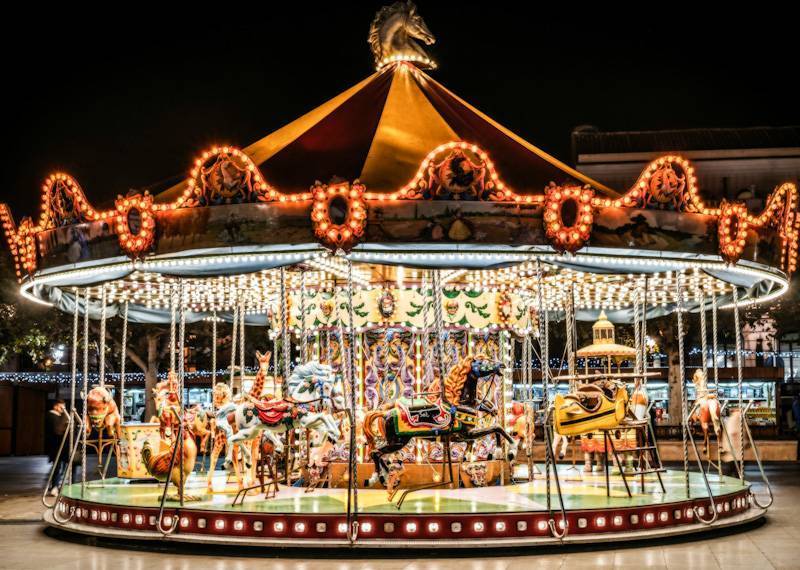India’s indoor amusement sector is on a remarkable growth trajectory, with projections indicating that the total stock of operational indoor amusement centers (IACs) will increase to 11 million square feet by the end of 2028, up from the current 6.6 million square feet. This represents a substantial growth rate of nearly 67%, according to the JLL report titled "Game On! Entertainment as the New Frontier in Indian Retail."
Current Market Overview
As of now, India boasts approximately 6.6 million square feet of operational indoor amusement space spread across over 500 centers in 83 cities. The majority of these centers are concentrated in South Indian cities, which collectively account for 2.3 million square feet of this space. Bengaluru leads the pack with 0.6 million square feet, followed by Hyderabad with 0.58 million square feet and Chennai with 0.31 million square feet. This significant concentration in South India reflects the region’s strong consumer demand and spending capacity for experiential entertainment.
In the Northern region, the National Capital Region (NCR) holds the second-largest share with 0.90 million square feet of IAC space. Ludhiana and Lucknow contribute an additional 0.18 million square feet each. Meanwhile, the Western part of the country, led by the Mumbai Metropolitan Region (MMR) and Pune, accounts for 0.66 million and 0.34 million square feet respectively. These figures underscore a growing interest in indoor entertainment across various regions of India.
Regional Concentration and Growth Trends
The significant regional concentration of IACs highlights the disparities in entertainment infrastructure across India. Tier I cities, including Delhi NCR, Mumbai, Bengaluru, Chennai, and Hyderabad, dominate the IAC market, accounting for 57% of the total stock. Delhi NCR alone has 0.90 million square feet spread across 68 centers, reflecting its status as a major hub for indoor amusement activities.
However, there is a notable shift towards Tier II and Tier III cities as well. The growth in these emerging markets is driven by several factors, including competitive real estate rentals, availability of land, and increasing consumer interest in diverse entertainment options. Operators are taking advantage of these factors by establishing large-scale centers in these regions, which are expected to contribute significantly to the overall increase in IAC space.
Emerging Formats and Innovations
The indoor amusement sector is not just expanding in terms of space but also evolving in terms of the types of entertainment offered. New formats such as eatertainment, competitive socializing, and edutainment are gaining traction. These formats go beyond traditional gaming arcades and trampoline parks by incorporating dining experiences, social interactions, and educational elements, respectively. This diversification is aimed at meeting the growing consumer demand for varied and immersive experiences.
The report anticipates the addition of over 3.5 to 4.2 million square feet of new entertainment centers over the next four years. This expansion will bring the total IAC stock to over 11 million square feet, reflecting the sector’s dynamic evolution and increasing consumer engagement.
Future Projections and Market Dynamics
Looking ahead, by the end of 2024, it is expected that 0.61 million square feet of new indoor amusement centers will become operational. This addition aligns with the broader trend of malls transforming into multifaceted social hubs and entertainment destinations. The surge in demand for varied experiences is expected to drive the rise of standalone indoor amusement centers, which will offer a range of entertainment concepts in single locations.
The growth of the IAC sector is indicative of a broader trend in India's retail and entertainment landscape. As consumer preferences shift towards experiential offerings and immersive environments, the indoor amusement sector is poised for continued expansion. This growth is supported by substantial investments and the development of innovative concepts that cater to a diverse audience.
Conclusion
India's indoor amusement sector is experiencing rapid growth, with substantial expansions projected for the coming years. The sector's evolution is marked by an increase in space, the introduction of new entertainment formats, and a broader regional spread, particularly in Tier II and Tier III cities. As the market continues to expand, the role of IACs in driving footfall and enhancing consumer engagement in retail environments will become increasingly significant. The dynamic nature of the sector promises a vibrant future, driven by innovation and a growing appetite for diverse and immersive entertainment experiences.









.png)